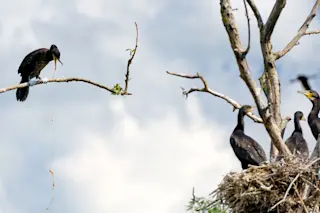(Credit: Shutterstock) Charles Darwin was a busy man. When he wasn’t advancing his groundbreaking theory of evolution by natural selection, he could be found carefully analyzing the contents of bird vomit and droppings. No, this wasn't an obscure hobby. He was getting his hands dirty to stack up more evidence to support one of his many hypotheses. He suspected that some birds had an unusual way of transporting plants to new locations. “Freshwater fish, I find, eat seeds of many land and water plants; fish are frequently devoured by birds, and thus the seeds might be transported from place to place,” he wrote in Origin of Species. In the same passage, Darwin described a set of experiments in which he stuffed seeds into the stomachs of dead fish, and then fed those fish to birds. After several hours, the birds would either excrete or regurgitate the seeds and “several of ...
Darwin Was Right About Bird Vomit
Discover how cormorant pellets contribute to the secondary dispersal of plants, supporting Darwin's theory of evolution.
More on Discover
Stay Curious
SubscribeTo The Magazine
Save up to 40% off the cover price when you subscribe to Discover magazine.
Subscribe













